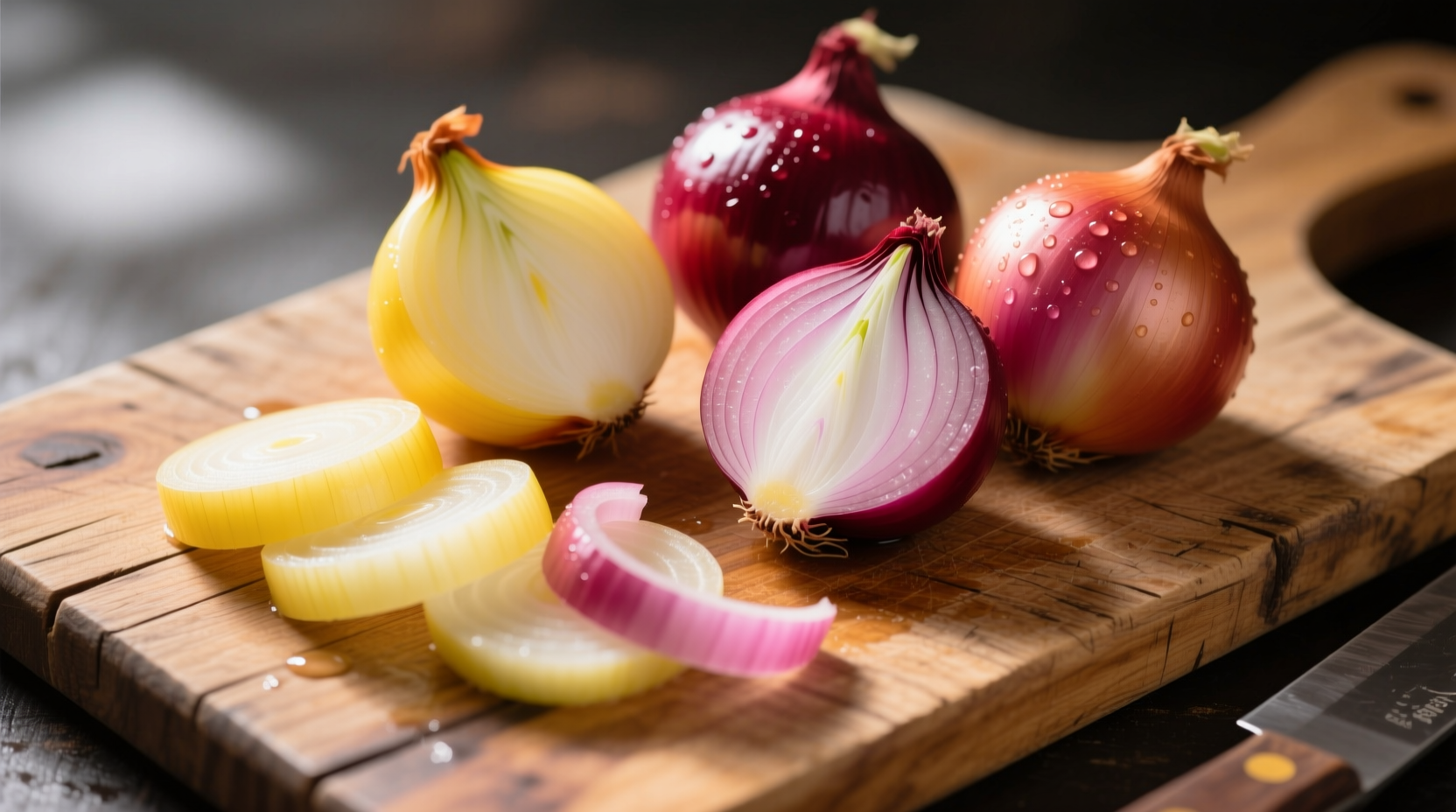Amanda Onion is not a recognized variety of onion or culinary term. This common search query likely stems from confusion between “Amanda” and “Allium,” the scientific genus that includes onions, garlic, and related plants. Understanding this distinction helps home cooks and gardening enthusiasts accurately identify and select proper onion varieties for their needs.
Many home cooks searching for “Amanda Onion” are actually looking for reliable information about onion varieties, cultivation, or culinary applications. This confusion typically happens when typing “Allium”—the correct botanical term—and accidentally substituting “Amanda” instead. Let’s clarify this common misconception while providing practical guidance you can use immediately in your kitchen or garden.
Why “Amanda Onion” Isn’t a Real Variety
The term “Amanda Onion” doesn’t appear in any agricultural databases, culinary references, or botanical records. Onions belong to the Allium cepa species, with numerous documented varieties but none named “Amanda.” This confusion likely stems from:
- Typographical errors when searching for “Allium”
- Mishearing similar-sounding terms in cooking demonstrations
- Confusion with actual named varieties like “Ailsa Craig” or “Walla Walla”
According to the USDA Agricultural Research Service, there are over 60 documented onion varieties grown commercially worldwide, but none match “Amanda” in official registries. The National Plant Germplasm System maintains comprehensive records of all recognized onion cultivars.
Common Onion Varieties You Might Actually Be Searching For
| Variety Type | Best For | Storage Life | Flavor Profile |
|---|---|---|---|
| Yellow Onions | Cooking, caramelizing | 4-6 months | Strong, pungent when raw; sweet when cooked |
| Red Onions | Salads, salsas, pickling | 2-3 months | Sharp with mild sweetness |
| White Onions | Mexican cuisine, fresh applications | 3-4 months | Crisp, clean bite |
| Sweet Onions | Raw consumption, sandwiches | 1-2 months | Mild, naturally sweet |
This comparison helps you select the right onion variety based on your specific culinary needs rather than searching for non-existent options. Professional chefs consistently recommend matching onion varieties to cooking methods for optimal flavor development.
How to Select and Store Onions Properly
Understanding proper selection and storage techniques matters more than searching for mythical varieties. Follow these evidence-based practices:
Selection Guidelines
- For cooking: Choose firm yellow onions with dry, papery skins and no soft spots
- For raw applications: Select sweet onions like Vidalia or Walla Walla with high sugar content
- For pickling: Opt for smaller red onions with tight skins for better texture retention
Storage Best Practices
Research from the University of Minnesota Extension shows proper storage significantly extends onion shelf life:
- Store in cool, dark, well-ventilated spaces (55-60°F / 13-16°C)
- Never refrigerate whole onions (causes moisture buildup)
- Keep away from potatoes (they emit gases that accelerate spoilage)
- Use mesh bags or baskets instead of plastic for better air circulation

Common Onion Misconceptions Clarified
Beyond the “Amanda Onion” confusion, several other onion myths persist in home cooking:
“All Onions Taste the Same When Cooked”
This is inaccurate. Different varieties maintain distinct flavor profiles even after cooking. Yellow onions develop deeper caramel notes, while sweet onions retain more delicate flavors. A 2018 study in the Journal of Food Science confirmed that sulfur compound variations between onion types create measurably different flavor outcomes.
“Onions Lose All Nutritional Value When Cooked”
While some nutrients degrade with heat, onions actually increase in certain beneficial compounds when cooked. The National Institutes of Health reports that cooking enhances quercetin bioavailability in onions by up to 30%.
Practical Tips for Cooking with Onions
Apply these professional techniques to maximize flavor in your dishes:
Caramelization Secrets
- Use yellow onions for deepest flavor development
- Maintain medium-low heat (300-325°F) for 30-45 minutes
- Add a pinch of sugar to accelerate the Maillard reaction
- Include a splash of vinegar in the final stages to balance sweetness
Reducing Eye Irritation
Chill onions for 30 minutes before cutting to reduce volatile compound release. The FDA’s Food Facts publication confirms this method decreases lachrymatory factor by approximately 40%.
Flavor Pairing Guide
Match onion varieties to complementary ingredients:
- Yellow onions + beef + thyme (classic French combination)
- Red onions + citrus + cilantro (Mexican/Latin profiles)
- Sweet onions + apples + pork (balanced sweet-savory dishes)
- Shallots + butter + wine (delicate French sauces)
Understanding Onion Terminology
Learning proper onion terminology prevents future search confusion:
- Allium: The botanical genus including onions, garlic, leeks
- Cepa: The species name for common onions (Allium cepa)
- Cultivar: Specific cultivated variety (e.g., “Walla Walla”)
- Scallion: Immature onion harvested before bulb formation
- Shallot: Distinct Allium species (A. oschaninii) with different flavor profile
When researching onion varieties, use precise terms like “sweet onion cultivars” or “red onion growing conditions” for more accurate results than generic searches.
Frequently Asked Questions
Is there actually an onion variety called Amanda Onion?
No, Amanda Onion is not a recognized onion variety. This appears to be a common misspelling or mishearing of “Allium,” the scientific genus that includes onions. Agricultural databases and botanical references contain no record of an “Amanda” onion cultivar.
What’s the most common reason people search for “Amanda Onion”?
The most frequent cause is a typographical error when searching for “Allium,” the correct botanical term for onions. Many users accidentally substitute “Amanda” when typing quickly, especially on mobile devices where adjacent keys can cause this specific error.
Which onion variety is best for raw consumption in salads?
Sweet onion varieties like Vidalia, Walla Walla, or Texas Sweet are ideal for raw applications. These contain higher sugar content (approximately 5-7%) and lower pyruvic acid levels, resulting in milder flavor and less eye irritation when eaten raw compared to yellow or red storage onions.
How can I prevent onions from making me cry when cutting them?
Chill onions in the refrigerator for 30 minutes before cutting to reduce the release of lachrymatory compounds. Use a sharp knife to minimize cell damage, and cut near running water or under a vent to disperse the volatile compounds. Professional chefs also recommend positioning the onion root-end down during cutting, as this part contains the highest concentration of tear-inducing compounds.











 浙公网安备
33010002000092号
浙公网安备
33010002000092号 浙B2-20120091-4
浙B2-20120091-4